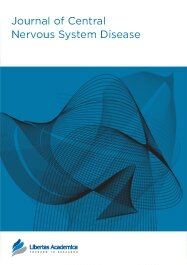

Publication Date: 31 Mar 2009
Journal: Journal of Central Nervous System Disease

W. Oliver Tobin1,4, Joseph G. Hentz2, Bentley J. Bobrow3 and Bart M. Demaerschalk4
1Department of Neurology, Adelaide and Meath Hospital, Dublin, incorporating the National Children’s Hospital, Trinity College Dublin, Republic of Ireland. 2Department of Biostatistics, Mayo Clinic Arizona, U.S.A. 3Department of Emergency Medicine, Mayo Clinic Arizona, U.S.A. 4Department of Neurology, Mayo Clinic Arizona, U.S.A.
Abstract
Background and Purpose: Previous studies have shown a stroke mimic rate of 9%–31%. We aimed to establish the proportion of stroke mimics amongst suspected acute strokes, to clarify the aetiology of stroke mimic and to develop a prediction model to identify stroke mimics.
Methods: This was a retrospective cohort observational study. Consecutive “stroke alert” patients were identified over nine months in a primary stroke centre. 31 variables were collected. Final diagnosis was defined as “stroke” or “stroke mimic”. Multivariable regression analysis was used to define clinical predictors of stroke mimic.
Results: 206 patients were reviewed. 22% were classified as stroke mimics. Multivariable scoring did not help in identification of stroke mimics. 99.5% of patients had a neurological diagnosis at final diagnosis.
Discussion: 22% of patients with suspected acute stroke had a stroke mimic. The aetiology of stroke mimics was varied, with seizure, encephalopathy, syncope and migraine being commonest. Multivariable scoring for identification of stroke mimics is not feasible. 99.5% of patients had a neurological diagnosis. This strengthens the case for the involvement of stroke neurologists/stroke physicians in acute stroke care.
PDF (192.34 KB PDF FORMAT)
RIS citation (ENDNOTE, REFERENCE MANAGER, PROCITE, REFWORKS)
BibTex citation (BIBDESK, LATEX)
This is my first experience working with the journal and it has been the easiest publication process that I can imagine. The links sent make login simple. The revisions are made so quickly. The decisions are made rapidly. We will definitely be working with this journal again.

All authors are surveyed after their articles are published. Authors are asked to rate their experience in a variety of areas, and their responses help us to monitor our performance. Presented here are their responses in some key areas. No 'poor' or 'very poor' responses were received; these are represented in the 'other' category.See Our Results
Copyright © 2013 Libertas Academica Ltd (except open access articles and accompanying metadata and supplementary files.)
FacebookGoogle+Twitter
PinterestTumblrYouTube